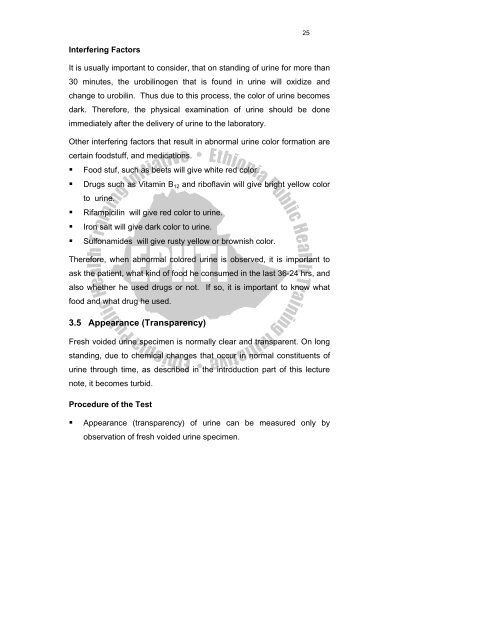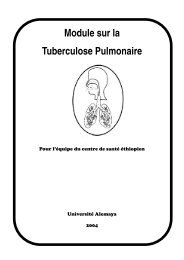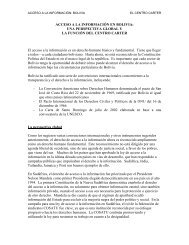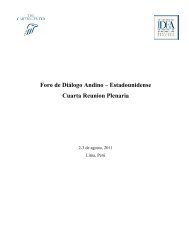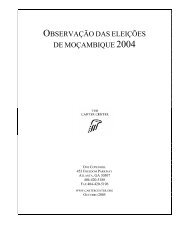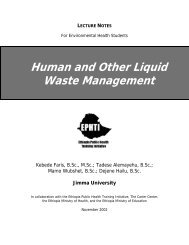Urinalysis - The Carter Center
Urinalysis - The Carter Center
Urinalysis - The Carter Center
You also want an ePaper? Increase the reach of your titles
YUMPU automatically turns print PDFs into web optimized ePapers that Google loves.
25<br />
Interfering Factors<br />
It is usually important to consider, that on standing of urine for more than<br />
30 minutes, the urobilinogen that is found in urine will oxidize and<br />
change to urobilin. Thus due to this process, the color of urine becomes<br />
dark. <strong>The</strong>refore, the physical examination of urine should be done<br />
immediately after the delivery of urine to the laboratory.<br />
Other interfering factors that result in abnormal urine color formation are<br />
certain foodstuff, and medications.<br />
• Food stuf, such as beets will give white red color.<br />
• Drugs such as Vitamin B 12 and riboflavin will give bright yellow color<br />
to urine.<br />
• Rifampicilin will give red color to urine.<br />
• Iron salt will give dark color to urine.<br />
• Sulfonamides will give rusty yellow or brownish color.<br />
<strong>The</strong>refore, when abnormal colored urine is observed, it is important to<br />
ask the patient, what kind of food he consumed in the last 36-24 hrs, and<br />
also whether he used drugs or not. If so, it is important to know what<br />
food and what drug he used.<br />
3.5 Appearance (Transparency)<br />
Fresh voided urine specimen is normally clear and transparent. On long<br />
standing, due to chemical changes that occur in normal constituents of<br />
urine through time, as described in the introduction part of this lecture<br />
note, it becomes turbid.<br />
Procedure of the Test<br />
• Appearance (transparency) of urine can be measured only by<br />
observation of fresh voided urine specimen.


